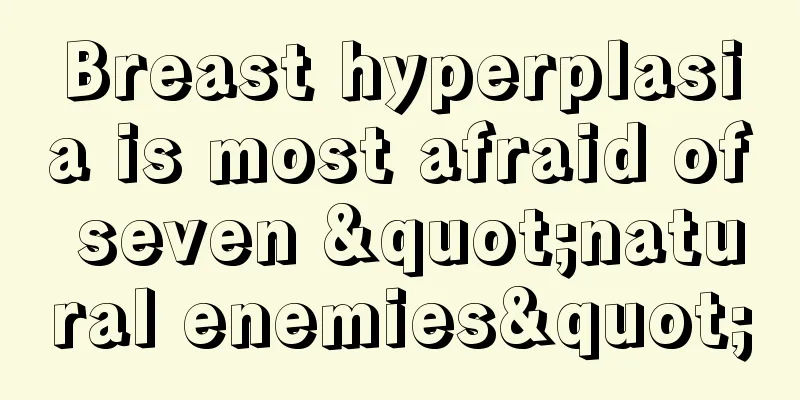The difference between curettage and abortion

|
Women need to have an abortion in time after an unexpected pregnancy. Currently, painless abortion is a relatively safe operation. Generally, the operation is painless and time-saving. Many women will choose painless abortion for abortion. Another abortion operation is forceps curettage. Many people don’t know about this operation. Some female friends who want to have an abortion don’t know what operation to choose. Let’s take a look at the difference between forceps curettage and abortion. 1. The difference between curettage and abortion Painless abortion uses anesthetics. Gynecological experts have found that painless abortion is currently a relatively safe abortion. Its advantages such as being painless and fast are welcomed by many women. In addition, with the development of medicine in recent years, more advanced abortion techniques have emerged. They are all based on painless abortion and add visualization or use micro-tube operations to make the operation safer. As the name suggests, curettage is to clamp the cervix with forceps and then use a special scraper to scrape it. It is a relatively old method. Embryos under 70 days old can be treated with conventional or painless abortion, while those between 70 and 100 days old can be treated with curettage. 2. Precautions after abortion 1. Keep the vulva clean and hygienic, wash it with warm water 1 to 2 times a day, and change sanitary napkins frequently. 2. You need to rest for 2 weeks after painless abortion and read less newspapers and watch less TV. 3. Eat more nutritious food to restore your body to normal as soon as possible. Generally speaking, cold drinks should be avoided for 7-10 days after surgery, and spicy food should be avoided within one month. 4. As long as you resume your sexual life after a painless abortion, you must take contraceptive measures to avoid getting pregnant again. Under normal circumstances, the endometrial repair period is about half a year, so special attention needs to be paid to prevent uterine damage caused by another pregnancy. 5. Do not take a sitz bath within 2 weeks or before vaginal bleeding has stopped. 3. Notes It is not advisable to eat foods that have the effect of strengthening uterine contraction and inducing labor: for example, cottonseed oil, leek, mangcai, purslane, kelp, oats, etc. have obvious inducing labor effect; the stems of purslane, cottonseed oil, leek, etc. can increase the contraction of uterine smooth muscle, and kelp and rabbit meat are cold in nature. Eating too much can easily cause fetal movement disorder and threatened abortion. If the patient eats it, it is likely to cause miscarriage, so they should not be eaten. |
<<: What should I do if I have painful contractions after an abortion?
>>: Does vaginal chickenpox require dietary adjustment?
Recommend
Is it normal to not have your period for more than ten days?
Women's menstruation is cyclical. If your per...
How long can glass glue be exposed to water in summer? How to remove moldy and black glass glue?
There are many types of glass glue on the market,...
How old can a girl grow taller
When a person is born, the key long bones, and th...
Are dehumidification products really effective? 10 dehumidification products were tested and the results were a bit disappointing
The rainy season is coming again after the return...
How to improve endometrial c type
Uterine wall type C means that the uterine wall m...
Precautions for sequelae of spontaneous abortion
Many women have faced the phenomenon of spontaneo...
Progesterone 18
When women of childbearing age get married and be...
How to detect pregnancy on the tenth day after ovulation
In modern society, we advocate eugenics and good ...
Feeling that menstruation is not coming
The feeling that menstruation cannot be discharge...
It’s time for the “Queen of Fruits” to show off again, but I really don’t recommend you to “praise” it
Mangosteen is known as the "Queen of Fruits&...
What are the dangers of having sex during menstruation?
Menstruation is a normal physiological cycle that...
How many weeks does sugar screening take?
Most of the examinations such as Down syndrome sc...
Delayed menstruation and transparent drawing
Every woman's menstrual cycle is different. M...
How long after giving birth can I achieve vaginal tightening? How to exercise for vaginal tightening after childbirth
Women will go through a long period of "conf...
What tests should patients with polycystic ovary syndrome do?
The best thing for women is to go to the hospital...









